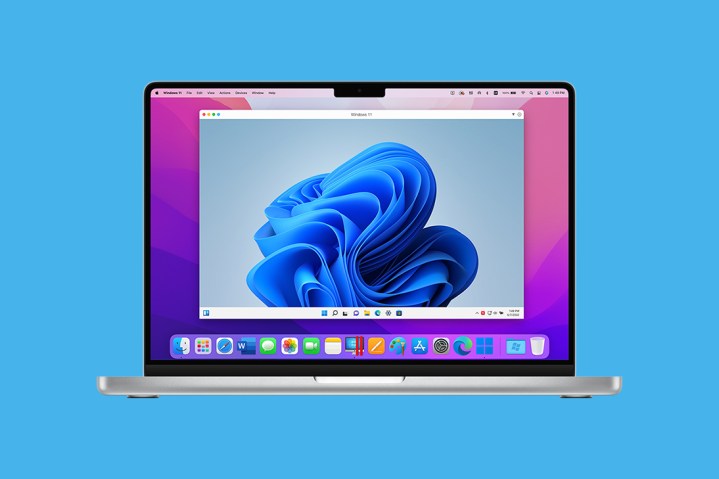You can now run Windows 11 natively on an Apple silicon Mac
Apple and Microsoft may be eternal rivals, but that doesn’t mean they never work together. Yet Microsoft has never officially supported the idea of running Windows 11 on an Apple silicon Mac, leaving the practice in something of a gray area — until now.
Installing Windows on a Mac has been pretty straightforward over the years, but the introduction of Apple silicon chips in Apple’s Macs complicated matters a little. Sure, there were ways to do it, but without Microsoft’s official approval, they required workarounds.
Now, though, Microsoft has posted a support page explaining how you can pair up its own software with Apple hardware. Specifically, the guide gives the green light for Windows 11 to be run either using a Windows 365 Cloud PC or in a virtual machine like the Parallels Desktop app.
Previously, Microsoft had required computers to have a Trusted Platform Module (TPM) in order to run Windows, which not all Macs have. Parallels solved this by creating a virtual TPM, but that’s no longer necessary. Instead, you can just run Parallels as normal and it will run Windows 11 without a hitch.
Years ago, this wouldn’t really have been a problem, as a Mac user could just fire up the Boot Camp app and get their computer to load into Windows. Boot Camp doesn’t work with Apple silicon Macs, though, leaving people to find alternative solutions.

One of those solutions was Parallels. This app runs Windows inside its own container on the Mac desktop, which bypasses the need to separately boot into Microsoft’s operating system.
Microsoft’s support page appears to be aimed at business users, as it suggests running Parallels Desktop alongside a copy of Windows 11 Pro or Windows 11 Enterprise. That’s unsurprising, as a major use case of virtualization software is for businesses that have a fleet of computers and need to test software on a different operating system.
Whether you’re a business user or simply want to run Windows 11 on your Mac without relying on any workarounds, this shift from Microsoft will likely be a welcome one. It just goes to show that Apple and Microsoft can play nice together when they want to.
Editors’ Recommendations
Apple and Microsoft may be eternal rivals, but that doesn’t mean they never work together. Yet Microsoft has never officially supported the idea of running Windows 11 on an Apple silicon Mac, leaving the practice in something of a gray area — until now.
Installing Windows on a Mac has been pretty straightforward over the years, but the introduction of Apple silicon chips in Apple’s Macs complicated matters a little. Sure, there were ways to do it, but without Microsoft’s official approval, they required workarounds.

Now, though, Microsoft has posted a support page explaining how you can pair up its own software with Apple hardware. Specifically, the guide gives the green light for Windows 11 to be run either using a Windows 365 Cloud PC or in a virtual machine like the Parallels Desktop app.
Previously, Microsoft had required computers to have a Trusted Platform Module (TPM) in order to run Windows, which not all Macs have. Parallels solved this by creating a virtual TPM, but that’s no longer necessary. Instead, you can just run Parallels as normal and it will run Windows 11 without a hitch.
Years ago, this wouldn’t really have been a problem, as a Mac user could just fire up the Boot Camp app and get their computer to load into Windows. Boot Camp doesn’t work with Apple silicon Macs, though, leaving people to find alternative solutions.

One of those solutions was Parallels. This app runs Windows inside its own container on the Mac desktop, which bypasses the need to separately boot into Microsoft’s operating system.
Microsoft’s support page appears to be aimed at business users, as it suggests running Parallels Desktop alongside a copy of Windows 11 Pro or Windows 11 Enterprise. That’s unsurprising, as a major use case of virtualization software is for businesses that have a fleet of computers and need to test software on a different operating system.
Whether you’re a business user or simply want to run Windows 11 on your Mac without relying on any workarounds, this shift from Microsoft will likely be a welcome one. It just goes to show that Apple and Microsoft can play nice together when they want to.
Editors’ Recommendations

